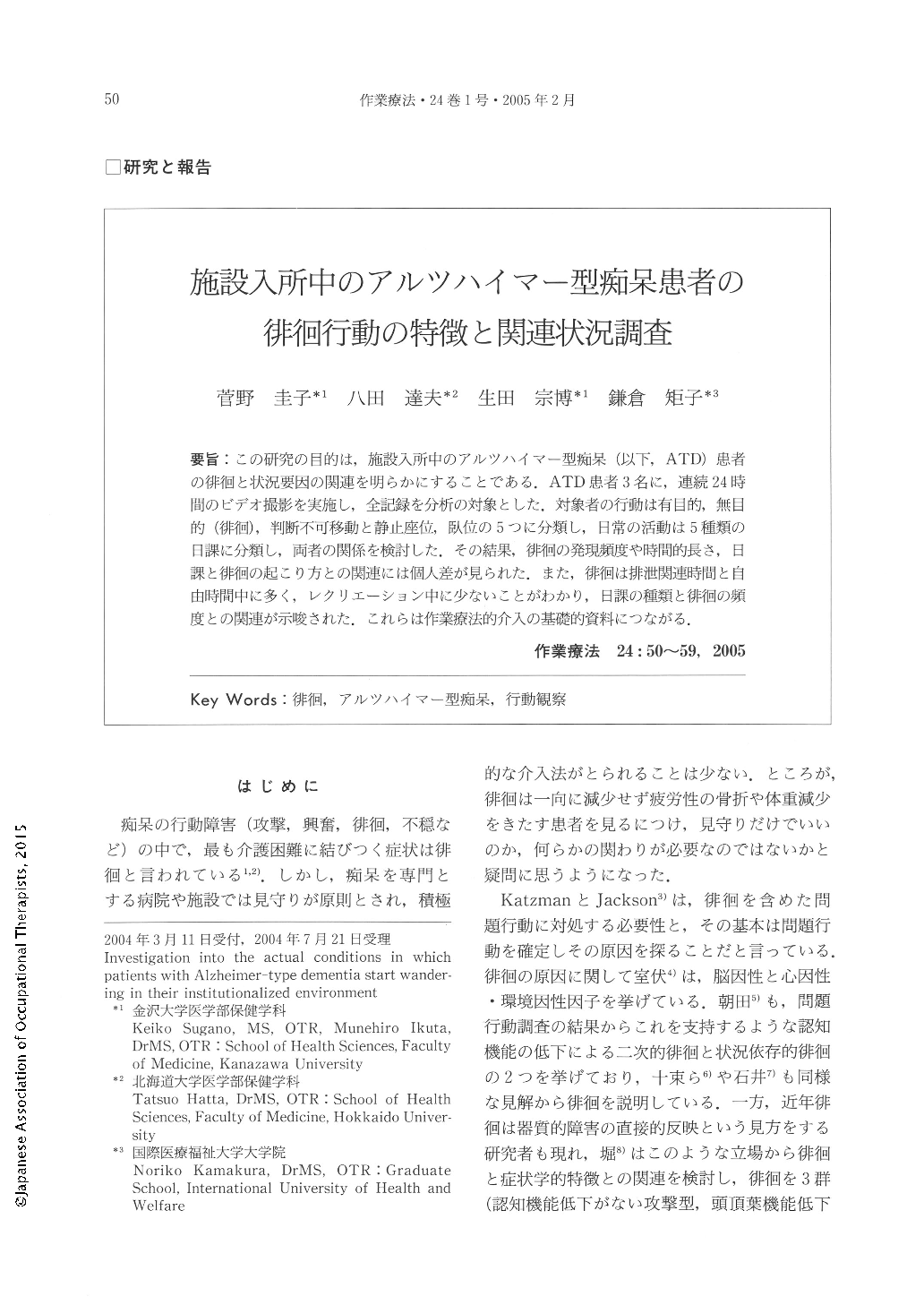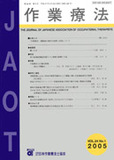Japanese
English
- 販売していません
- Abstract 文献概要
- 1ページ目 Look Inside
- 参考文献 Reference
要旨:この研究の目的は,施設入所中のアルツハイマー型痴呆(以下,ATD)患者の俳徊と状況要因の関連を明らかにすることである.ATD患者3名に,連続24時間のビデオ撮影を実施し,全記録を分析の対象とした.対象者の行動は有目的,無目的(俳徊),判断不可移動と静止座位,臥位の5つに分類し,日常の活動は5種類の日課に分類し,両者の関係を検討した.その結果,俳徊の発現頻度や時間的長さ,日課と俳徊の起こり方との関連には個人差が見られた.また,俳徊は排泄関連時間と自由時間中に多く,レクリエーション中に少ないことがわかり,日課の種類と俳徊の頻度との関連が示唆された.これらは作業療法的介入の基礎的資料につながる.
The purpose of this study is to describe the relationship between wandering behavior and daily activities of patients with Alzheimer-type dementia in their institutionalized environment. Such descriptive information is essential for the development of successful intervention strategies. Wandering was defined as locomotion without specific purpose. Daily activities of demented patients were videotaped for further analysis and description. Locomotion of the patients was classified as purposeful, wandering (nonpurposeful) or unclassified. The patients partaking in 24-hour activities were divided into five categories—activities under physical care, vital check, recreation, free time and sleep. The results were as follows : (1) time of wandering showed substantial variation; (2) wandering behavior mostly occurred during physical care or free time. In contrast, wandering was not observed during recreation. The patients started wandering most frequently while care for urination was provided.
In conclusion, the study highlighted a variety of wandering. In general, wandering tended to be marked in specific daily-life settings including urination and other physical-care related situations. It was of special interest that wandering was markedly reduced during recreational activities.

Copyright © 2005, Japanese Association of Occupational Therapists. All rights reserved.


